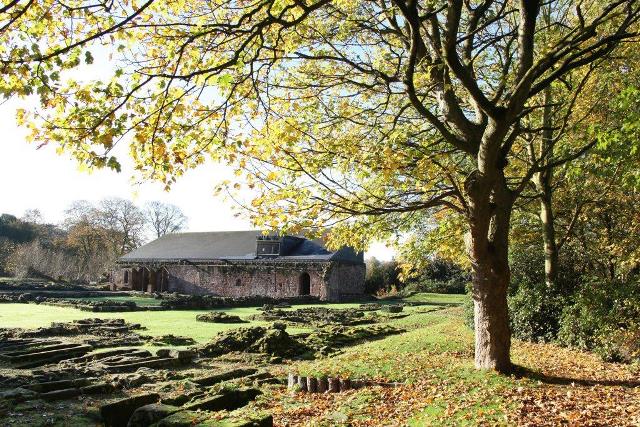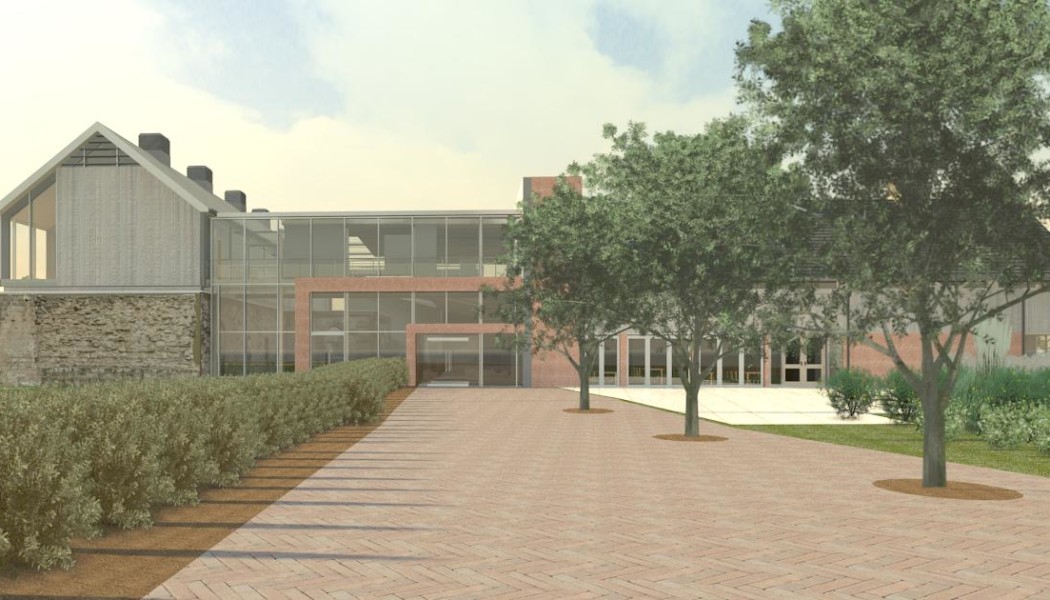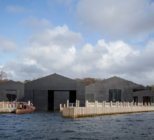It is 900 years since Norton Priory was founded by the Barons of Halton, Cheshire and to celebrate this landmark work is about to start on an ambitious project to build a new museum, visitor centre, galleries and café. The plans to redevelop Norton Priory were set in motion in 2008 as the current museum building was in poor condition with leaky roofs, poor drainage and no heating system. Eventually, by 2010, conditions had deteriorated to the extent that there was an outbreak of mould in the collections store and the entire collection had to be relocated off-site with the help of Halton Borough Council. A major Heritage Lottery bid was subsequently submitted and a grant of £3.7m was awarded in August 2014, with the remaining amount being raised through fundraising and other grants.
“The redevelopment will allow us to reveal the whole story of Norton Priory over the past nine centuries,” says learning and education officer Claire Broadhurst. “While the story of the medieval priory is very important, the later stories of a Tudor hall, then a Georgian mansion being built on the site haven’t enjoyed as much prominence. The exploration of the post-Reformation history will also be helped by the improved environmental conditions in the new museum allowing fragile artefacts to be displayed.”
The Norton Priory Museum Trust was established 40 years ago and the former museum opened in 1982 following extensive excavations in the 1970s and 1980s making Norton Priory one of the most excavated monastic sites in Europe. It was during these excavations that the foundations and undercroft of the medieval priory were exposed. Hundreds of artefacts were also discovered including a twice life-size statue of St Christopher, a large amount of medieval floor tiles, stone carvings, pottery, glass, wood, leather and skeletal remains.

“As a result, the artefacts uncovered at Norton help interpret everyday life in the priories and abbeys which were once so common throughout the land,” says Broadhurst.
The priory was founded by the Barons of Halton and Constables of Chester in 1115 and was part of the Augustinian order, whose members were canons; ordained priests who worked with the community and undertook roles outside the priory, rather than the monks of other orders who lived a more separate life within the walls. The monastery was disestablished in 1536 under the Reformation, which itself tells a fascinating tale of infighting between landowners and the clergy.
“A lot less is known about these than other orders such as the Benedictines or Cistercians, so the discoveries at Norton Priory have a very important part to play in telling the wider history of medieval Britain,” she says.
Earthworks Archaeology is currently on site completing preliminary works in areas where new foundations are required for the redevelopment. The archaeologists have also taken up the tile floor in the medieval undercroft where conditions had become extremely damp and the floor had started to sink in some areas causing the tiles to raise and crack. The redevelopment work will substantially improve the environment in the undercroft, and a geo-textile membrane will be put in place to support the tiles and prevent the floor from sinking in the future.
The comprehensive redevelopment will see a new first floor gallery above the undercroft, developed through consultation with English Heritage. This gallery will have a pitched cedar shingle roof and cedar cladding both being centuries old construction methods, yet able to mix with the demands of a modern museum. Large windows will be fitted looking over the medieval ruins providing a link between objects and where they were found.
“The undercroft is one of few features on site that has survived all phases of development since the 12th century,” says Broadhurst. “Initially the storage range for the priory, it would have had the Abbott’s Tower and lodgings above. The undercroft became the wine cellar for the Georgian house and had at least two floors above it, including a ballroom.”

Visitors entering the new museum will step into a spacious atrium which will allow a full view of the façade of the medieval undercroft. The project architects, Buttress, have extensive experience of working with heritage sites and the challenges of creating new buildings while preserving archaeology and since last November have developed an understanding of the archaeology by undertaking trial works on the site. “This showed us that we were going to encounter a post-Reformation medieval wall,” said Buttress Associate, Stephen Anderson. “What we have done is designed a system where the front elevation hangs off a bridge which stands between the undercroft and the new café block and it can therefore touch the archaeology very, very lightly and it means it is clearly visible and can be interpreted by visitors.”
Anderson says that overall there will be a much improved visitor experience compared to what was previously there, ensuring a much clearer interpretation of the visitor approach to the site, which will be more open and much more accessible. “One of the things that struck us when we first visited the site was how invisible some of the key features were so the undercroft itself was something you wouldn’t really see until you’ve gone past it,” he says. “The statue of St Christopher is of huge significance yet he is a bit hidden so these key features become much more prominent and the undercroft will be there to be seen as you enter the building. In respect of the nave of the historic church, you will be able to look down the centre line and put yourself in that context and the visitor will be able to understand their relationship with the site much more clearly and it will be much more legible than it is now.” Anderson says that ultimately with the archaeological work and the reorientation of the site the architects can give a more accurate understanding of Norton Priory’s long history.
The statue of St Christopher dating to the late 14th century is regarded as one of the most important pieces of English medieval sculpture. A recent project supported by Arts Council England used new projection technology to bring the statue to life with lighting, animations, and with the voice of Brian Blessed. The new museum building will allow the statue to become a centrepiece and focal point of the museum.
“More than one thousand artefacts have been selected for display, almost four times as many as were on show in the old museum on the site,” says Broadhurst. “Low temperatures and fluctuating humidity in the former museum had meant that many artefacts could not be displayed and some had to be removed from the site to prevent damage.”
The exhibitions and interpretation strategy are being designed by Mather & Co and new environmentally controlled displays will allow all types of materials to be displayed in ways that ensure their preservation for future generations. Many more artefacts will be kept within visible storage, intending to show the wealth of material recovered from the site. There will also be interpretative displays including digital interactives, hands-on exhibits, and guided tours setting artefacts in their context within the priory site.
The process of creating a new museum has also given opportunities for new research and the importance of the museum’s collections is now being established with Norton Priory recently recognised as having the widest variety of medieval tile types in Britain.

PROJECT OVERVIEW
Architects: Buttress
Contractors: Announced mid-April 2015
Funding: Received £3.7million from the Heritage Lottery Fund
Fundraising: £800,000 match funding required. Partly achieved by inviting people to sponsor a tile in the medieval undercroft for £10. For £70 donors can also have a name inscribed in glass inside the new entrance area of the museum
Building start date: Late May, with the main part of the construction and conservation works scheduled to be completed around Christmas
Fit out: Will begin in January 2016
Museum open date: August 2016










